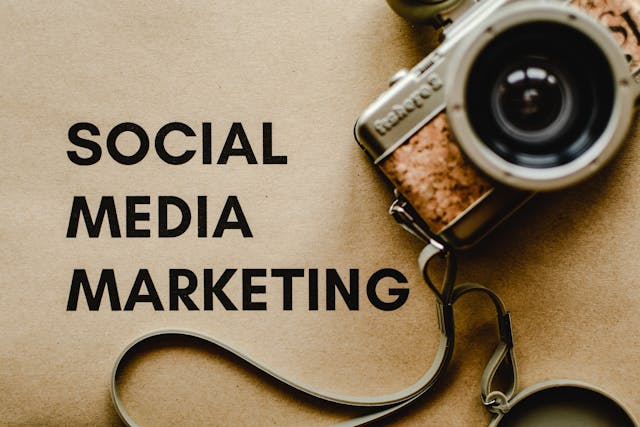Comprehensive Guide to Social Media Marketing for Small Businesses: Expert Tips
Social media is the best tool for small and medium-scale businesses to tap clients and do brand outreach with the help of social media management agency in India. As per Statista, social media marketing helps companies increase their exposure by up to 86%, which results in 76% increased traffic. However, with so many platforms and strategies available, figuring out where to start can be a bit confusing. This is where creative agencies in India come into play.
This guide provides small business owners with a step-by-step approach to social media marketing. It is a definitive guide for developing and executing social media strategies successfully, whether you are partnered with a Creative Agency in India or doing it independently.
How to Create Social Media Marketing Strategy for Your Business
Here is a step by step approach to build your social media marketing strategy.
1. Understanding Social Media Platforms
It is essential to know that every social media platform serves a specific audience and features that can only be utilised by using particular marketing approaches.
- Facebook is good for connecting with various stakeholders and sharing diverse content, including text, images, and videos.
- Instagram is ideal for use in Visual Storytelling, Product Displays, and Targeting the Young Population.
- Twitter is more suitable for getting real-time information, customer support, and industry discussions.
- LinkedIn stresses professional networking, which makes it ideal for business-to-business marketing and thought leadership.
- Pinterest is best for companies in the fashion, food and home décor sectors and those focusing on visual content.
Deciding which platforms to use should be based on your objectives and where your audience can be found.
2. Setting Clear Goals and Objectives
Next, setting objectives to guide content creation for social media platforms is crucial. Ask yourself whether you want to enhance your brand recognition, website traffic, or sales? This will involve setting S.M.A.R.T (specific, measurable, achievable, relevant, and time-bound) goals that will help you define your strategies and monitor your progress toward achieving your goals.
3. Crafting a Content Strategy
Content is the backbone of social media marketing. Your content should be interesting for the target audience and retain your brand's tone and image.
- Content Types: Use educational content, product presentation, customer feedback, company’s life, entertaining content, quizzes, and question and answer format.
- Visuals: High-definition images, graphics, and videos can add value to the creation of attention. To develop quality images, you do not need to spend a lot of money; you can use Canvas or Adobe Spark.
- Content Calendar: Organise your posts in advance so that you can publish them on time and maintain a sound frequency of posts.
4. Engaging with Your Audience
It is also important to note that social media is not a one-way street. Responding to comments, messages, and reviews is especially important to involve your audience and make them feel valued. According to a study by Gallup, businesses that could effectively manage their B2B customers experienced 63% less customer churn.
Promote user-generated content by using contests or asking people to post about their experiences with your brand. Developing a community around your brand will get loyal customers and make them spread the word about it.
5. Leveraging Paid Advertising
Organic reach is essential, but social media sites tend to suppress posts without paid promotion. According to Unbounce, individuals who visit a retailer's site from paid ads are 50% more likely to purchase than those directed there by an organic link. Paid advertising can increase your audience and define whom the audience is made of.
- Facebook Ads: Has a suitable targeting mechanism that lets you target people according to their ages, locations, interests, and behaviour.
- Instagram Ads: These are especially useful for visual-based campaigns such as stories and shopping ads.
- LinkedIn Ads: For business-to-business marketing, there are features such as sponsored content and InMail.
Try various ad formats and see the performance to improve your ad expenditure.
6. Analysing and Optimising Performance
Measuring your social media analytics can help you determine your effectiveness in your social media marketing. Some tools that can be used are Facebook Insights, Instagram Insights, and Twitter Analytics to check parameters such as engagement rate, click-through rate and follower growth. Reviewing your growth and performance can help you check your results and ensure that you are implementing the right strategy.
7. Contact a Creative Agency
If you are a small business and you do not have the time or the resources to devote to social media marketing, it would be beneficial to engage a social media management agency India. These agencies are affordable and provide the following services: content creation, strategy development, and campaign management. With their help, you can achieve the maximum effect from using social networks without significantly affecting other business areas.
Conclusion
Social media marketing is a form of marketing strategy that is very effective in promoting small businesses to customers and achieving the company's goal.
However, managing all aspects of social media can be challenging, especially when you're focused on running your budding business. That's where a dedicated partner can make all the difference. Consider partnering with a digital marketing and advertising agency if you're ready to elevate your social media strategy and achieve tangible results. They’ll help you determine what’s best for you and how to achieve your business goals smoothly! Contact us today and get started.

